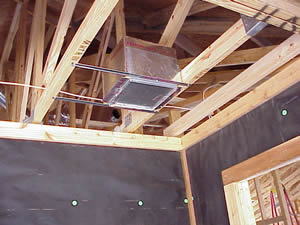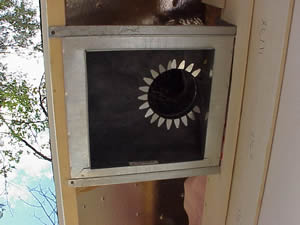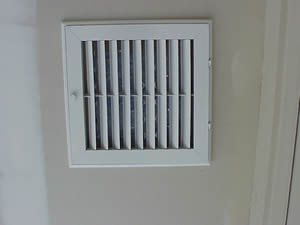| Reference Publication: Chandra, Subrato, Fonorow, Ken, McCloud, Matthew, Moyer, Neil, Beal, David, Chasar, David, McIlvaine, Janet, Parker, Danny, Sherwin, John, Martin, Eric, Mullens, Michael, Lubliner, Michael, McSorley, Michael. "The Building America Industrialized Housing Partnership" (peer reviewed). Symposium on Improving Building Systems in Hot, Humid Climates - Houston, Texas, May 20-22, 2002. |
| Disclaimer: This report was prepared as an account of work sponsored by an agency of the United States government. Neither the United States government nor any agency thereof, nor any of their employees, makes any warranty, express or implied, or assumes any legal liability or responsibility for the accuracy, completeness, or usefulness of any information, apparatus, product, or process disclosed, or represents that its use would not infringe privately owned rights. Reference herein to any specific commercial product, process, or service by trade name, trademark, manufacturer, or otherwise does not necessarily constitute or imply its endorsement, recommendation, or favoring by the United States government or any agency thereof. The views and opinions of authors expressed herein do not necessarily state or reflect those of the United States government or any agency thereof. |
The Building America Industrialized Housing Partnership (BAIHP)
Florida Solar Energy Center
ABSTRACT
The Building America Industrialized Housing Partnership (BAIHP)
is one of five competitively selected U.S. DOE Building America
teams and began work on 9/1/99. BAIHP focuses on improving
the energy efficiency, durability and indoor air quality in
manufactured homes. Team members, Cavalier Homes, Fleetwood
Homes, Palm Harbor Homes, Southern Energy Homes, and manufacturers
in the Super Good Cents/Natural Choice program produce over
100,000 manufactured homes/yr currently.
In addition, the BAIHP team provides technical assistance to about 30 site builders and modular home manufacturers including Habitat for Humanity affiliates throughout the nation.
BAIHP is also charged with enhancing the energy efficiency and learning environment in portable classrooms in the northwestern states of WA, OR and ID.
This paper summarizes the multifaceted work being performed by BAIHP and provides specific data on 310 homes constructed in the Gainesville FL area with technical assistance from Florida Home Energy and Resources Organization. The paper also summarizes typical causes and cures for moisture problems in manufactured homes.
INTRODUCTION
The Building America Industrialized Housing Partnership’s goals are to:
- Cost effectively reduce the energy cost of industrialized housing and portable classrooms by up to 50% while enhancing indoor air quality, durability and productivity.
- Assist in the construction of thousands of energy efficient industrialized houses annually.
- Make our team members pleased and proud to be working with us.
Industrialized housing includes manufactured housing (built to the HUD code), modular housing (factory built housing modules assembled on site) and production housing (site built housing produced in a systematic manner). The project scope also includes portable classrooms.
The Florida Solar Energy Center (FSEC) of the University of Central Florida (UCF) serves as the prime contractor. Subcontractors include the Washington State University Energy Program, the American Lung Association of Central Florida, the Oregon Office of Energy, the Idaho Department of Water Resources, Florida Home Energy and Resources Organization (FL.H.E.R.O.), D.R. Wastchack, LLC and Alten Design. A current list of over 30 industry partners and other collaborators may be found on our web site www.baihp.org.
HOMES MANUFACTURED AND BUILT
From project inception in September 1999 through December, 2001over 43,000 homes have been manufactured or built with BAIHP technical assistance as detailed in Table 1.
Homes
manufactured to Energy Star or greater energy savings
|
|
Super
Good Cents west of the cascades (With appropriate ventilation system) |
475 |
Homes
by FL H.E.R.O. in Gainesville, FL |
418 |
Palm
Harbor Homes |
007 |
Habitat
for Humanity, south Florida |
002 |
Habitat
for Humanity, Americus, GA |
016 |
Fallman
Design and Construction |
001 |
Homes
by D.R.Wastchak in Phoenix, AZ |
2,179 |
Subtotal |
3,098 |
Homes
produced with a HERS score of around 85 (25% better than MEC) |
|
Super
Good Cents - Electric |
5,808 |
Natural
Choice (Nat Gas/ Propane) Homes |
1,858 |
Energy
Efficient Homes (PHH div. In NC) |
1,645 |
Subtotal |
9,311 |
|
Homes
produced with airtight duct systems (around 15% savings in Htg and Cooling Energy) |
|
Palm
Harbor Homes |
22,000 |
Southern
Energy Homes |
8,000 |
Cavalier
Homes |
1,000 |
Subtotal |
31,000 |
 |
Figure
1: OA Intake Duct in Back Porch |
 |
Figure
2: OA Intake Duct in Soffit |
 |
Figure
3: Filter Backed Grill Covering the OA Intake |
Technical measures incorporated in BAIHP homes include some or many of the following features - better insulated envelopes (including Structural Insulated Panels and Insulated Concrete Forms), unvented attics, “cool” roofs, advanced air distribution systems, interior duct systems, fan integrated positive pre ssure dehumidified air ventilation in hot humid climates, quiet exhaust fan ventilation in cool climates, solar water heaters, heat pump water heaters, high efficiency right sized heating/cooling equipment, and gas fired combo space/water heating systems.
HOMES
BY THE FLORIDA HOME ENERGY AND RESOURCES ORGANIZATION (FL.H.E.R.O.)
Over 400 single and multifamily homes have been constructed
in the Gainesville, FL area with technical assistance from
FL H.E.R.O. These homes were constructed by over a dozen different
builders. In this paper data from 310 of these homes is presented.
These homes have featured better envelopes and windows, interior
and/or duct systems with adequate returns, fan integrated
positive pressure dehumidified air ventilation, high efficiency
right sized heating/cooling equipment, and gas fired combo
space/water heating systems. The innovative outside air (OA)
system is described below.
The OA duct is located in the back porch (Figure 1) or in
the soffit (Figure 2). The OA is filtered through a 12"x12"
filter (which is readily available) located in a grill (Figure
3) which is attached to the OA duct box. The flex OA duct
size varies depending on the system size - 4" for up
to 2.5 tons, 5" for 3 to 4 ton and 6" for a 5 ton
system. The OA duct terminates in the return air plenum after
a manually adjustable butterfly damper (Figure 4).
Measured Home Energy Ratings (HERS) and airtightness on these FL. H.E.R.O. homes is presented next in figures 5 through 8. Data is presented for both single family detached (SF) and multifamily homes (MF). See Table 2.
Table
2. Summary statistics on FL.H.E.R.O. Homes n = sample size |
||
SF |
MF |
|
Median
cond area |
1,909 |
970 |
%
constructed with 2x4 frame or frame and block |
94% |
100% |
Avg.
Conditioned Area, ft2 |
1,993
(n=164) |
1,184
(n=146) |
Avg.
HERS score |
87.0
(n=164) |
88.0
(n=146) |
Avg.
ACH50 |
4.5
(n=164) |
5.2
(n=146) |
Avg.
Qtot (CFM25 as % of floor area) |
6.9%
(n=25) |
5.0%
(n=72) |
Avg.
Qout (CFM25 as % of floor area) |
3.0%
(n=15) |
1.4%
(n=4) |
The damper can be set during commissioning and closed by the homeowner in case the OA quality is poor (e.g. forest fire). This system introduces filtered and conditioned ventilation air only when the cooling or heating system is operational. The ventilation air also positively pressurizes the house. Data on the amount of ventilation air or positive pressurization is not available from a large sample of homes. A few measurements indicate that about 25 to 45 cfm of ventilation air is provided which pressurizes the house in the range of +0.2 to +0.4 pascals.

Figure 5: HERS Scores for FL H.E.R.O. Homes

Figure 6: ACH50 Values for FL H.E.R.O. Homes

Figure 7: Qtot Values for FL H.E.R.O. Homes

Figure 8: Qout Values for FL H.E.R.O. Homes
Data is available for other typical non BAIHP, new Florida homes (FPL , 1995 and Cummings et al, 2001). The FPL study had a sample size of over 300 single family homes and the median Qout was 7.5% , three times that of the FL. H.E.R.O. homes. In the Cummings study of 11 homes the measured average values were : ACH50= 5.7, Qtot=9.4% and Qout=4.7%. Although the sample sizes are small the FL. H.E.R.O. homes appear to have significantly more airtight duct systems than typical homes.
The remainder of the paper presents status of other tasks of the BAIHP project.
OTHER BAIHP TASKS
Moisture
Problems in HUD code homes
The BAIHP team expends considerable effort working to solve
moisture problems in existing manufactured homes in the hot,
humid Southeast.
Some manufactured homes in Florida and the Gulfcoast have experienced soft walls, buckled floors, mold, water in light fixtures and related problems. According to the Manufactured Housing Research Alliance (MHRA), who we collaborate with, moisture problems are the highest priority research project for the industry.
The BAIHP team has conducted diagnostic tests (blower door, duct blaster, pressure mapping, moisture meter readings) on about 40 such problem homes from five manufacturers in the past two years and shared the results with MHRA. These homes were newly built (generally less than 3 years old) and in some cases just a few months old when the problems appeared. The most frequent causes were:
- Leaky supply ducts and/or inadequate return air pathways resulting in long term negative pressures.
- Inadequate moisture removal from oversized a/c systems and/or clogged condensate drain, and/or continuous running of the air handler fan.
- Presence of vinyl covered wallboard or flooring on which moist air condenses creating mold, buckling, soft walls etc.
- Low cooling thermostat set point (68-75F), below the ambient dew point.
- Tears in the belly board and/or poor site drainage and/or poor crawlspace ventilation creating high rates of moisture diffusion to the floor.
Note that these homes typically experience very high cooling bills as the homeowners try to compensate for the moisture problems by lowering the thermostat setpoints. These findings have been reported in a peer reviewed paper presented at the ASHRAE IAQ 2001. conference (Moyer et al)
The Good News:
As a result of our recommendations and hands-on training, BAIHP partner Palm Harbor Homes (PHH) has transformed duct design and construction practices in all of its 15 factories nationwide producing about 11,000 homes/yr. All Palm Harbor Home duct systems are now constructed with mastic to nearly eliminate air leakage and produced with return air pathways for a total cost of <$10/home!! The PHH factory in AL which had a high number of homes with moisture problems has not had a single problem home the past year!
Field
Monitoring
Several houses and portable classrooms are being
monitored and the data displayed on the web. (Visit http://www.infomonitors.com/).
Of special interest is the side-by-side monitoring of two
manufactured homes on the campus of the North Carolina A &
T U. where the advanced home is saving about 70% in heating
energy and nearly 40% in cooling energy, proving that the
Building America goal can be met in manufactured housing.
Other monitored sites include the Washington State U. Energy
House in Olympia, WA; the Hoak residence in Orlando, FL; two
portable classrooms in Marysville, WA; a classroom each in
Boise, ID and Portland, OR. See other papers being presented
at this symposium for details on two recently completed projects
giving results from duct repairs in manufactured homes (Withers
et al) and side by side monitoring of insulated concrete form
and base case homes (Chasar et al).
“Cool”
Roofs and Unvented Attics
Seven side-by-side Habitat homes in Ft. Myers, FL. were tested
under unoccupied conditions to examine the effects of alternative
roofing strategies. After normalizing the data to account
for occupancy and minor differences in thermostat set points
and equipment efficiencies, the sealed attic saved 9% and
the white roofs saved about 20% cooling energy compared to
the base case house with a dark shingle roof for the summer
season in South Florida. Visit http://www.fsec.ucf.edu/bldg/pubs/coolroof/ for more information.
Habitat
for Humanity
Habitat for Humanity affiliates work in the local community
to raise capital and recruit volunteers. The volunteers build
affordable housing for and with buyers who can't qualify for
conventional loans but do meet certain income guidelines.
For some affiliates, reducing utility costs has become part
of the affordability definition.
To help affiliates make decisions about what will be cost effective for their climate, BAIHP researchers have developed examples of Energy Star homes for more than a dozen different locations. These are available on the web at http://www.fsec.ucf.edu/bldg/baihp/casestud/hfh_estar/index.htm. The characteristics of the homes were developed in conjunction with Habitat for Humanity International (HFHI), as well as Executive Directors and Construction Managers from many affiliates. Work is continuing with HFHI to respond to affiliates requesting a home energy rating through an Energy and Environmental Practices Survey. 36 affiliates have been contacted and home energy ratings are being arranged using combinations of local raters, Building America staff, and HFHI staff.
HFHI has posted the examples of Energy Star Habitat homes on the internal web site PartnerNet which is available to affiliates nationwide.
“Green”
Housing
A point based standard for constructing green homes
in Florida has been developed and may be viewed at http://www.floridagreenbuildings.org/.
The first community of 270 homes incorporating these principles
is now under construction in Gainesville, FL. The first home
constructed and certified according to these standards has
won an NAHB energy award.
BAIHP researchers are participating as building science - sustainable products advisor to the HUD Hope VI project in Miami, redeveloping an inner city area with over 500 units of new affordable and energy efficient housing.
Healthy
Housing
BAIHP researchers are participating in the development of
national technical and program standards for healthy housing
being developed by the American Lung Association.
A 50-year-old house in Orlando is being remodeled to include energy efficient and healthy features as a demonstration project.
EnergyGauge
USA®
This FSEC developed software uses the hourly DOE 2.1E engine
with FSEC enhancements and a user-friendly front end to accurately
calculate home energy ratings and energy performance. This
software is now available. Please visit http://energygauge.com/ for more information.
Industrial
Engineering Applications
The UCF Industrial Engineering (UCFIE) team supported the
development and ongoing research of the Quality Modular Building
Task Force organized by the Hickory consortium, which includes
thirteen of the nation's largest modular homebuilders. UCFIE
led in research efforts involving factory design, quality
systems and set & finish processes. UCFIE used research
findings to assist in the analysis and design of two new modular
housing factories – Excel homes, Liverpool, PA and Cardinal
Homes - Wyliesburg, VA.
CONCLUSIONS
The entire BAIHP team of over 20 researchers and students are involved in a wide variety of activities to enhance the energy efficiency, indoor air quality and durability of new housing and portable classrooms.
In addition to energy efficiency, durability, health, comfort and safety BAIHP builders typically consider resource and water efficiency. For example, in Gainesville, FL BAIHP builders have incorporated the following features in developments:
- Better planned communities
- More attention given to preserving the natural environment
- Use of reclaimed sewage water for landscaping
- Use of native plants that require less water
- Storm water percolating basins to recharge the ground water
- Designated recreational areas
- Better designed and built infrastructure
- Energy efficient direct vented gas fireplaces (not smoke producing wood)
ACKNOWLEDGEMENTS
This research was sponsored, in large part, by the U.S. Department of Energy, Office of Building Technology, State and Community Programs under cooperative agreement no. DE-FC36-99GO10478 administered by the U.S. DOE Golden field office. This support does not constitute an endorsement by DOE of the views expressed in this report.
The authors appreciate the encouragement and support from George James, program manager in Washington DC and Keith Bennett, project officer in Golden CO.
Special thanks to Bert Kessler of Palm Harbor Homes, Mike Dalton of Stylecrest Sales, Mike Wade of Southern Energy Homes and David Hoak of Alten Design for the hundreds of hours they have each contributed to the success of BAIHP.
We are grateful to our sponsors, industry partners, collaborators and colleagues for this opportunity to make a difference.
REFERENCES
Cummings, J.B., Withers, C., McIlvaine, J., Sonne, J., Fairey, P., and Lombardi, M., “Field Testing to Characterize the Airtightness and Operating Pressures of Residential Air Handlers,” FSEC-CR-1285-01, Florida Solar Energy Center, Cocoa, FL., November 30, 2001.
FPL, 1995. “New Home Construction Research Project Findings, Results & Recommendations,” Final Report to the Florida Public Service Commission, June 1995.
Moyer, N., Beal, D., Chasar, D., McIlvaine, J., Withers, C. and Chandra, S. “Moisture problems in manufactured housing: Probable causes and cures”, Proc. ASHRAE Indoor Air Quality 2001, Nov, 2001.